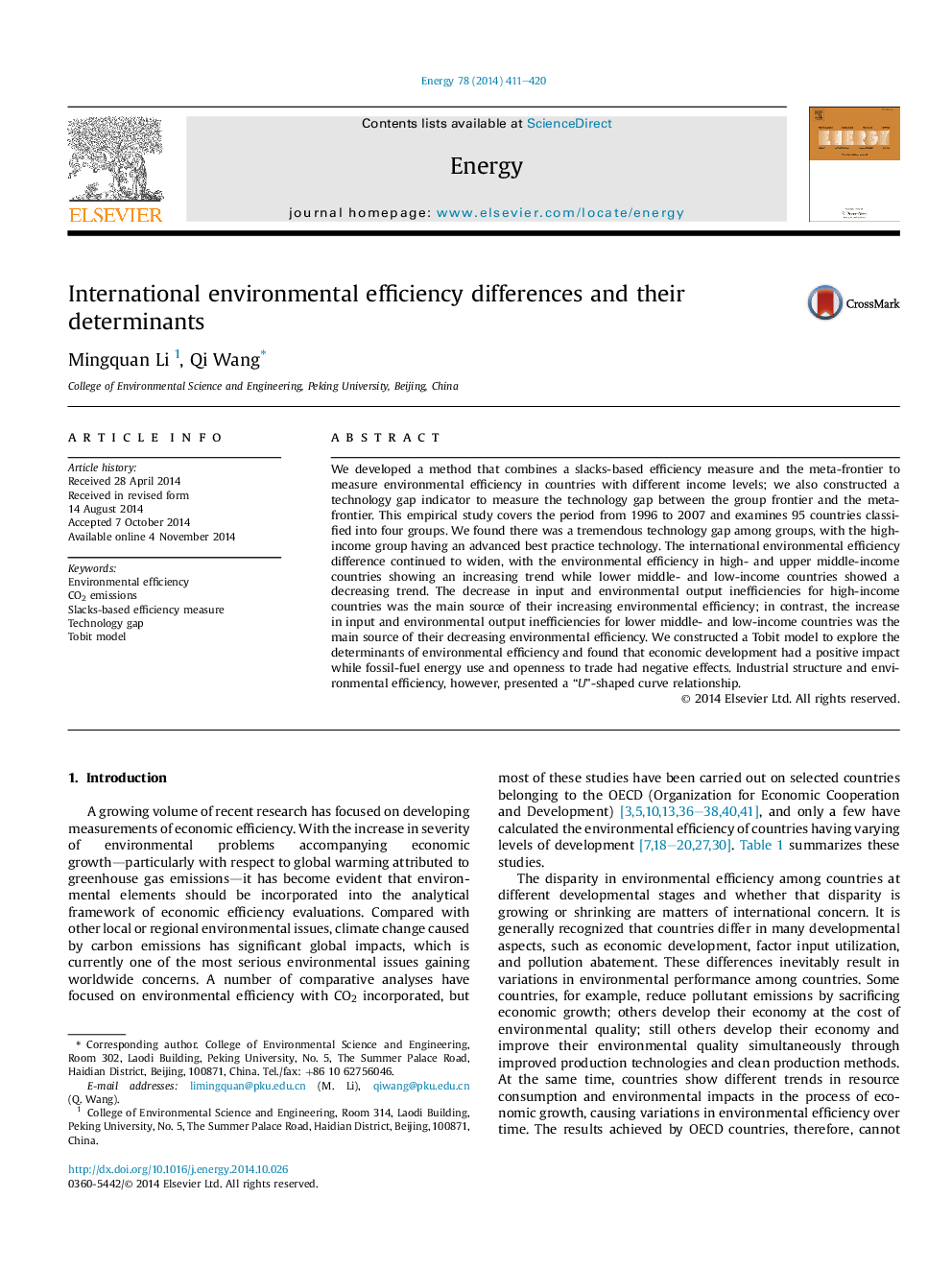| کد مقاله | کد نشریه | سال انتشار | مقاله انگلیسی | نسخه تمام متن |
|---|---|---|---|---|
| 8076087 | 1521468 | 2014 | 10 صفحه PDF | دانلود رایگان |
عنوان انگلیسی مقاله ISI
International environmental efficiency differences and their determinants
ترجمه فارسی عنوان
تفاوت بین المللی بهره وری محیط و عوامل تعیین کننده آن
دانلود مقاله + سفارش ترجمه
دانلود مقاله ISI انگلیسی
رایگان برای ایرانیان
کلمات کلیدی
ترجمه چکیده
ما یک روش را در بر داشتیم که یک کارآیی مبتنی بر اسلکس و مرزهای مرزی برای سنجش کارایی محیط زیست در کشورهایی با سطوح درآمد متفاوت را در بر می گیرد؛ ما همچنین یک شاخص شکاف فناوری را برای اندازه گیری شکاف تکنولوژی بین مرز گروه و مرز بین مرزی ایجاد کردیم. این مطالعه تجربی، دوره ای از سال های 1996 تا 2007 را پوشش می دهد و 95 کشور را به چهار گروه تقسیم می کند. ما دریافتیم که در میان گروه ها یک اختلاف تکنولوژی فوق العاده ای وجود دارد؛ گروه با درآمد بالا دارای تکنولوژی پیشرفته پیشرفته است. تفاوت بین المللی بهره وری محیطی با افزایش بهره وری محیط در کشورهای با درآمد بالا و متوسط با افزایش روند رو به رشد، در حالی که کشورهای با درآمد متوسط و کم درآمد، روند رو به کاهش را نشان دادند. کاهش تولید ناخالص داخلی و تولید ناخالص داخلی کشورهای با درآمد بالا منبع اصلی افزایش بهره وری محیطی آنها بود. در مقابل، افزایش تولید ناخالص داخلی و تولید ناخالص داخلی در کشورهای با درآمد متوسط و کم درآمد، منبع اصلی کاهش بهره وری محیطی آنها بود. ما یک مدل توبیت برای کشف عوامل تعیین کننده بهره وری محیطی ساختیم و دریافتیم که توسعه اقتصادی تأثیر مثبتی داشت و مصرف انرژی فسیلی و باز بودن در تجارت اثرات منفی داشت. ساختار صنعتی و راندمان زیست محیطی، با این حال، یک منحنی شکل منحنی شکل داده شده است.
موضوعات مرتبط
مهندسی و علوم پایه
مهندسی انرژی
انرژی (عمومی)
چکیده انگلیسی
We developed a method that combines a slacks-based efficiency measure and the meta-frontier to measure environmental efficiency in countries with different income levels; we also constructed a technology gap indicator to measure the technology gap between the group frontier and the meta-frontier. This empirical study covers the period from 1996 to 2007 and examines 95 countries classified into four groups. We found there was a tremendous technology gap among groups, with the high-income group having an advanced best practice technology. The international environmental efficiency difference continued to widen, with the environmental efficiency in high- and upper middle-income countries showing an increasing trend while lower middle- and low-income countries showed a decreasing trend. The decrease in input and environmental output inefficiencies for high-income countries was the main source of their increasing environmental efficiency; in contrast, the increase in input and environmental output inefficiencies for lower middle- and low-income countries was the main source of their decreasing environmental efficiency. We constructed a Tobit model to explore the determinants of environmental efficiency and found that economic development had a positive impact while fossil-fuel energy use and openness to trade had negative effects. Industrial structure and environmental efficiency, however, presented a “U”-shaped curve relationship.
ناشر
Database: Elsevier - ScienceDirect (ساینس دایرکت)
Journal: Energy - Volume 78, 15 December 2014, Pages 411-420
Journal: Energy - Volume 78, 15 December 2014, Pages 411-420
نویسندگان
Mingquan Li, Qi Wang,
